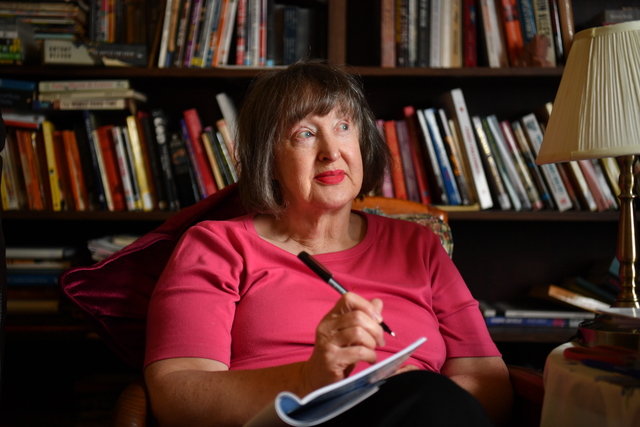Williamstown amateur historian Barb McNeill is Star Weekly’s history columnist. This week she tells the mysterious tale of Italian immigrant Giovanni Garretto whose murder in 1932 has never been solved.
Giovanni Garretto , a 34 year old market gardener, lived alone in Tower Road, Werribee. His humble home was a sparsely furnished, two-roomed hut in the centre of six acres of a holding sub-leased from Mr George Abbott.
Born in Vizzina, Sicily, Giovanni had been in Australia for three years, seven months of which had been spent in Werribee, working from dawn ’til dusk growing cabbages, potatoes, garlic and peas.
If he had any vices, nobody knew of them. His life revolved around farming and saving all his money to bring his wife and child to Australia. He was frequently seen showing photographs of them, exclaiming over their beauty and his love for them. If all went well, they would be joining him in early 1933. A hard worker who lived with extreme frugality, he was respected by his employer and liked by the Italian community, it could be said that he had not a single enemy in the world.
But he did.
On the afternoon of 4 September, 1932, a friend named Giuseppe Lentini, called in for a visit. He was horrified to find Giovanni lying near a water tank at the rear of the hut, shot dead, his head almost completely blown off. A partly opened razor blade lay by his left foot; at his right foot stood a cup full of water. There were no signs of a struggle.
Sub-Inspector Deeley arrived with Constable Luca from North Melbourne, who was fluent in Italian. At first they pursued the vengeance theory. The local Italians pooh-poohed the idea. Sicilian feuds were settled with knives, not guns. The police tactfully made no mention that the Chicago Mafia had spawned no fewer than 90 murders in 1930, all committed by Sicilian gun-men. Constant rumours continued to swirl about the Camorra and Mafia lurking in Werribee, but the Italians were adamant: If the killer were Italian, he would use a knife, not a firearm.
So, if Giovanni Garretto was not known to have membership in or dealings with any secret society, what was the motive – jealousy, hatred, payback, or a woman? There were whispers of a Melbourne girlfriend whom Giovanni visited on Sundays. If she existed, whoever she was, she made no effort to come forward. Detectives soon crossed her off the list.
Examination of the hut indicated that nothing had been stolen; there was no sign of ransacking, or of opening the bundle of letters from Mrs Garretto. Giovanni’s few silver coins were lying near the bed. But when the detectives reached under the pillow, they found something which demonstrated that the victim had been in fear of his life – a fully loaded automatic pistol, with seven cartridges in the magazine and one in the barrel.
The case became even more mysterious. The lack of any sign of struggle in or near the hut clearly indicated that Giovanni Garretto had been taken by surprise. What was truly baffling was that the killer had left not the faintest sign of his presence. In order to reach the hut, he would have had to walk over dozens of vegetable furrows yet not a single footprint or even part of one was ever found. How did he manage on a rainy night to have left not even one mark in the mud?
The only verifiable connection to the killer that was found at the scene was a piece of wadding from a No. 6 cartridge normally used for duck shooting.
Adding to that was the very strange story told by Mrs Christina Searle, whose holding adjoined Garretto’s . On the night of the murder, she put her children to bed and then stayed in her kitchen whilst her husband was with Giuseppe Lentini at a Board of Works dance in Werribee. At about 10 pm, she heard a dog barking, and the sound of a shot coming from the direction of Garretto’s hut.
On 19 September, according to Mrs Searle, detectives from the CIB visited her for a statement and before they left, turned back her clock by several hours, with instructions not to touch it again or leave the house until they returned. No explanation for this bizarre behaviour, if indeed it had occurred, was ever supplied.
An unnamed neighbouring farmer reported seeing a well dressed “foreigner”, dark and stocky, on the Friday afternoon talking to Giovanni Garretto near the hut. They shook hands and the stranger departed. The stranger was seen again, in the vicinity of Tower Road, heading towards Giovanni’s hut at about 8 pm on the night of the murder. Who he could be? Nobody knew.
The inquest at the Melbourne Morgue was held on the 28 November 1932, the Coroner finding that Giovanni Garretto had died of gunshot wounds to the head, unlawfully and maliciously murdered by some persons unknown.
There is a faint possibility that the gardener was murdered due to jealousy- perhaps a lover spurned by the woman who chose to marry Giovanni Garretto, travelling to Australia to track down his rival and wreak revenge – but somewhat unlikely, especially as nothing in her letters to her distant husband indicated any troubles.
The most likely reason for this murder is organised crime. Then as now, crime syndicates had an interest in controlling wholesale prices, and were renown for their total lack of conscience when it came to dealing with those who refused to play their game. This was a cool, calculated execution, committed by someone who vanished like a phantom, never to be found, after destroying the dreams of the wife, the child and the industrious market gardener.
The killing was never solved. The razor and cup near the body can perhaps be explained, as some cultures believe that the dead require to be neat and refreshed during their journey into the next life. Clearly, these objects were placed there after the murder.
On the 15 September 1932, a sad little scene took place at Werribee Police Station. The farming implements and bay horse owned by the murdered man were auctioned off. The sale raised a paltry sixteen pounds.
The queer story of the CIB altering the clock 15 days after the murder makes no sense at all if the visiting men were really police. Possibly they were members of a syndicate, with the altering of the clock intended to give them an alibi about the time of their call. Warning Mrs Searle to stay indoors would prevent her noticing what sort of car they were driving.
But the swarthy “foreigner” seen twice in the vicinity, the insistence that a gun would never be used to settle a feud, the absence of footprints, the pistol under the pillow, and no known motive – all present an impenetrable and enduring mystery.








